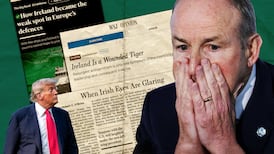Before the last Stormont election in 2022, I interviewed Ron McDowell, deputy leader of the Traditional Unionist Voice (TUV). Polls were predicting a breakthrough for his party, up from one seat to five or six, as unionist voters turned against the DUP over the Brexit protocol. Naturally, McDowell told me he was optimistic, but he added size was not essential for influence. “Look at all the smaller parties: People Before Profit, the Greens, the TUV. We all hold really strong core beliefs that we won’t bend or break from. The DUP will bend to pick up votes, so they’re bending to our position.”
This is the mindset the UUP needs to adopt as Mike Nesbitt returns to the helm. Nesbitt led the party for five years up to 2017 and will run unopposed next month to replace outgoing leader Doug Beattie, mainly due to a dearth of anyone willing to take on the task. Nesbitt described his strategy a decade ago as “shrink to grow”. Beattie sometimes used the same phrase. Both meant the party should shrink from a broad church to a liberal platform, from which it could rebuild. A statement this week from deputy leader Robbie Butler indicates this approach will continue, assisted by reform of the party’s decision-making structures.
If the same approach from the same leader is to have a different outcome, deeper change will be required. The UUP still hopes shrinkage is a tactic to restore its “natural” position as the dominant voice of unionism – knocking the broad church down to put it back it up again. It struggles to accept its optimal role for the foreseeable future might be as a small party bending the rest of unionism towards it.
If the UUP cannot imagine the TUV as an inspiration, it might try thinking of itself as the Progressive Democrats to the DUP’s Fianna Fáil, a parallel suggested only half in jest. It is a pity the most obvious example at Westminster is Ukip’s destruction of the Conservatives.
Real loser in row over EU observer status for Northern Ireland is the centre ground
Northern Ireland may be left in a migration limbo. That’s a problem for the Republic
Unionists outdoing each other on questions about nativity plays and witchcraft in schools
Ivana Bacik’s careless words are causing alarm among unionists
“Let’s become permanently smaller” is an almost impossible message for any leader to sell. The UUP has neither shrunk nor grown since 2012; it is still hovering around 12 to 13 per cent, representing a bewildering range of unionist opinion, although there is some evidence its voters have become younger and more liberal on average. This seems crushingly disappointing to a party that thinks of itself as a hobbled giant, yet from the perspective of a smaller party, the UUP already has a strong base from which to consolidate and exert influence.
Only once Nesbitt has recalibrated his colleagues’ horizons could he address the question of what the UUP stands for: what are its strong core beliefs? The presumed answer, liberal unionism, is an ill-defined concept, generally taken to mean greater willingness to compromise with nationalism on anything, not just on liberal issues. The TUV has the luxury of hardline clarity, plus the unionist tradition of “Lundying” opponents as weak or appeasers. It would be difficult to reverse-Lundy the DUP and the TUV while standing on the swampy centre ground of liberal unionism. The UUP would be constantly explaining itself and the DUP could easily cut the ground from under it by making occasional liberal noises.
A small party can have a more focused message. The UUP could become unionism’s champion of centre-right or centrist good government, challenging the populism and incompetence of the DUP and Sinn Féin. It has been exploring this over water charges and has also managed a pragmatic line on Brexit. As health minister, Nesbitt is ideally placed to demonstrate he can take essential decisions other parties have ducked. In addition, or alternatively, the UUP could set unionism’s agenda on Stormont reform, an issue Alliance wants to own. Nesbitt took the UUP out of the executive in 2015 in frustration at DUP-Sinn Féin dysfunction. The move stretched the rules and forced the regularisation of official opposition, arguably the most significant reform since the Belfast Agreement.
The UUP could probably compel a renegotiation of powersharing if it announced its assembly members would designate as “other” rather than unionist at the next election. Although this is unlikely, it demonstrates what could be done, and it would not be unprecedented – Alliance briefly redesignated as unionist in 2001.
Big ideas were not in short supply during Nesbitt’s last spell as leader. The problem was his failure to develop them into a coherent programme. Best remembered is his 2016 attempt to build a cross-community opposition with the SDLP under the slogan “Vote Mike, Get Colum”. This had not been pinned down with either party and SDLP leader Colum Eastwood declined to reciprocate. Nesbitt resigned months later. If the UUP expects better next time around, it will need to get his instinct for creative chaos under control.













